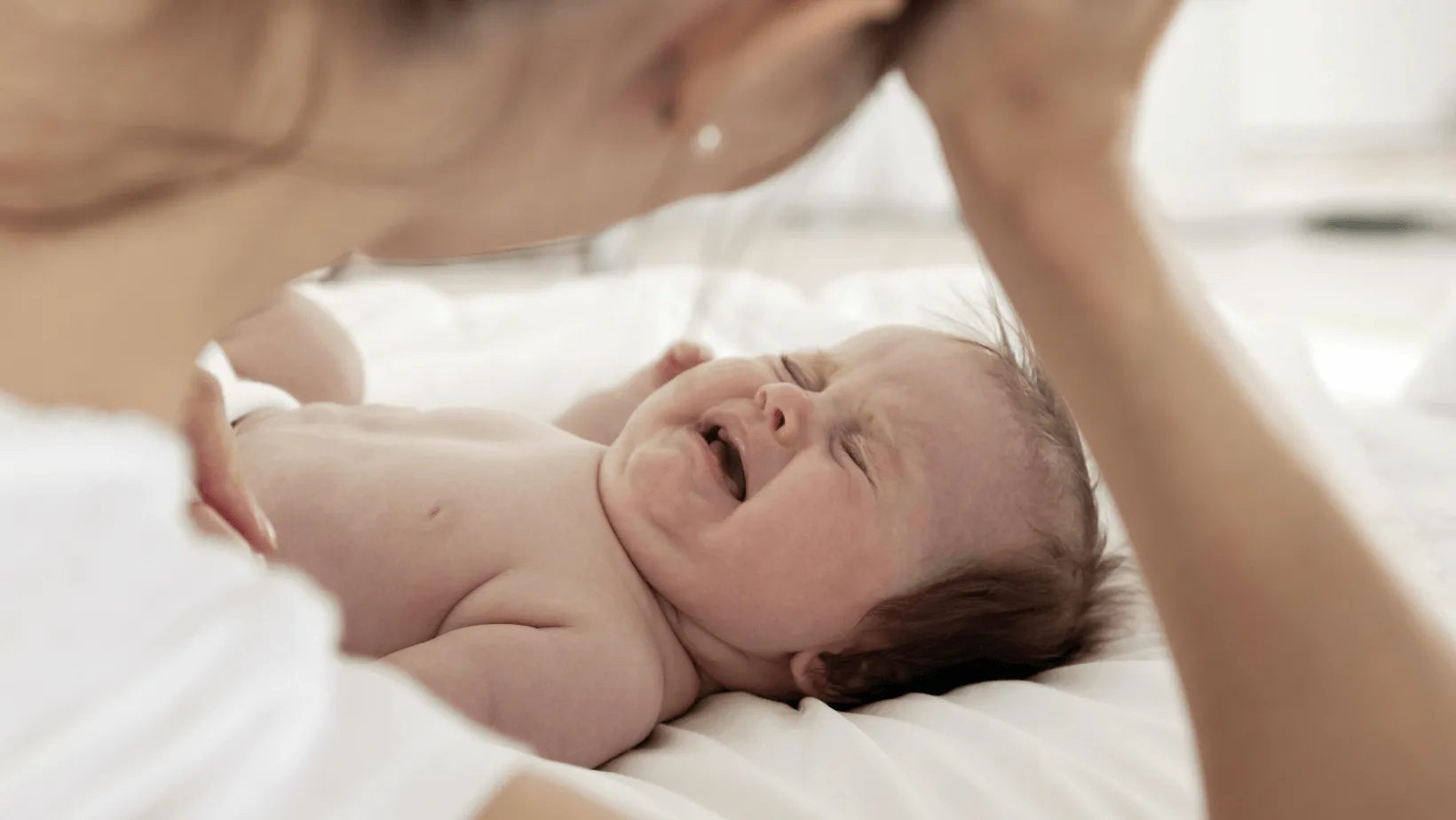It’s common for moms to notice a difference between their two breasts. One might feel fuller, make more milk, or even look a little bigger. This is normal, but it can feel concerning if your baby starts refusing one breast.
When Baby Prefers One Side
Sometimes, a baby begins to fuss, pull away, or cry when nursing from one side. This is called breast preference or one-sided nursing. Our bodies aren’t perfectly symmetrical, and many babies develop a side preference.
You can keep feeding your baby from just one side if that’s what works. Some moms pump the other breast to keep supply balanced, while others let it dry up. Both options are safe.
Is Breast Preference Normal?
Yes, very normal. Many babies prefer one breast over the other. Some latch more easily on one side, while others simply get used to the flow from their favorite breast.
Even if your baby is nursing from one side, they can still get enough milk. The more your baby nurses, the more that breast produces. Some moms notice a temporary lopsided breast, but this usually balances out after weaning.

Why Do Some Babies Prefer One Breast?
Babies refusing one breast or showing a one-sided breastfeeding preference can happen for many reasons:
- Different milk flow speeds – One breast may release milk very quickly, while the other is slower. Babies often show a clear side preference based on what feels easiest.
- Comfort and body position – If your baby has a stiff neck, an ear infection, or simply finds one side comfier, they may feed better there.
- Nipple shape and latch – Even small differences in nipple shape can make latching easier on one side. This may lead to a rejected breast.
- Taste changes – Mastitis, plugged ducts, or lower milk supply can make milk taste saltier. Babies often notice and may refuse one breast.
- Breast surgery or scarring – A breast that’s had surgery or cancer treatment may produce less milk, leading to single-side breastfeeding.
- Feeding habits – Moms often hold babies the same way, which can unintentionally create a boob preference.
- Emotional comfort – Sometimes babies just feel cozier on one side. Over time, this becomes a habit.
What Can You Do About Lopsidedness?
A lopsided breast can be frustrating, but there are many gentle solutions:
- Pump the less-preferred breast – Pumping for 10–15 minutes after feeds helps keep supply up and prevents clogged ducts.
- Offer the rejected breast first – Babies usually feed most eagerly at the beginning, so try starting with the undesired breast.
- Switch positions – If your baby prefers cradle hold on one side, try the football hold on the other. This keeps their body angle the same and may trick them into feeding from the undesired breast.
- Use sleepy feeds – Offer the rejected breast when your baby is drowsy. Babies are often less picky when half asleep.
- Adjust milk flow – Pump a little before feeding if let-down is too strong, or use compressions to speed up a slow flow.
- Try nipple shields – These can help if latch is easier on one side than the other.
- Create a calm feeding space – Dim lights, skin-to-skin, or even feeding in a warm bath can encourage feeding from the rejected breast.
- Comfort nurse – Once your baby is full, let them comfort suck on the less preferred breast. Even light sucking boosts supply.
Avoid forcing – Forcing a latch can lead to a true nursing strike. Stay gentle and patient.
And here’s the truth: if your baby continues breastfeeding from only one breast and you’re okay with it, that’s fine too. Many moms successfully nurse from one side only. Your breasts will even out after weaning, and your baby will still thrive.
When to Get Support
If you’re worried about breast refusal or about lopsidedness, reach out for help. A lactation consultant can guide you through specific feeding strategies. La Leche League also offers free support and encouragement.
Final Reassurance
With patience, gentle encouragement, and support, most babies accept both breasts again over time. And even if they don’t, single-side breastfeeding is still a healthy, safe way to nourish your baby.
Key Takeaways
- It’s normal for babies to show a preference for one breast, which can happen for various reasons like milk flow and comfort.
- Even with one breast, your baby can get enough milk since their nursing stimulates production.
- If your baby refuses one breast, gently encourage them to try it using techniques like offering it first or switching positions.
- Lopsidedness may occur but usually balances out over time; single-side breastfeeding can be healthy and safe.
- Reach out to a lactation consultant for support if you’re concerned about refusing one breast or lopsidedness.
Q&A
A – Yes, it’s possible that babies can develop a negative association if feeding becomes stressful on one side. Forcing a latch can make them resist that breast even more. The good news is that you can gently retrain. Skin-to-skin contact, calm feeding environments, and playful bonding can help rebuild positive feelings. Offering the refused breast when your baby is sleepy or using laid-back positions may also encourage them. Many babies return to nursing on both sides over time with patience and reassurance.
A – It’s common for babies to show a side preference. Sometimes the issue is positioning, nipple shape, or flow differences. You can try:
– Offering the less-preferred breast when your baby is drowsy.
– Using different positions (like football hold) to make the latch easier.
– Pumping the smaller breast after feeds to keep supply going.
Even if your baby continues nursing from one side, they will still get enough milk. The temporary lopsidedness usually evens out after breastfeeding ends.
A – Yes. Single-side breastfeeding is safe if your baby is fed on demand and gaining well. One breast can fully adjust supply to meet your baby’s needs. Some moms worry about a lopsided breast, but this usually balances out after weaning.
A – That yellowish liquid is usually colostrum, the nutrient-rich “first milk” that breasts produce when supply is low or drying up. It’s not harmful and doesn’t mean anything is wrong. If the unused breast isn’t stimulated, it may stay mostly inactive, but it can still release small amounts of colostrum. This is normal for many moms, especially during extended one-sided nursing. If you notice pain, swelling, or blood, check with your doctor to rule out infection or other issues.
A – Yes, in many cases you can restart supply in the unused breast. This process is called relactation. To encourage it:
– Pump or hand express from the left breast several times a day.
– Offer that breast first at each feeding, even if your baby only suckles briefly.
– Use breast compressions while pumping or nursing to fully drain the breast.
At first, you may only see drops of colostrum, but with consistent stimulation, mature milk can return. The key is frequent, regular milk removal.
A – You may notice some lopsidedness, but this often balances out after weaning.
A – Offer it first, try new positions, or feed when baby is sleepy. Pumping also helps keep supply active.
A – Yes. As long as your baby is fed on demand, one breast can fully meet their needs.
A – Most of the time, no. But if your baby always refuses the same breast and you notice pain, swelling, or unusual changes, check with a healthcare provider.
References and Resources:
- Kellymom – Getting baby back on the breast
- La Leche League – Getting support near you


